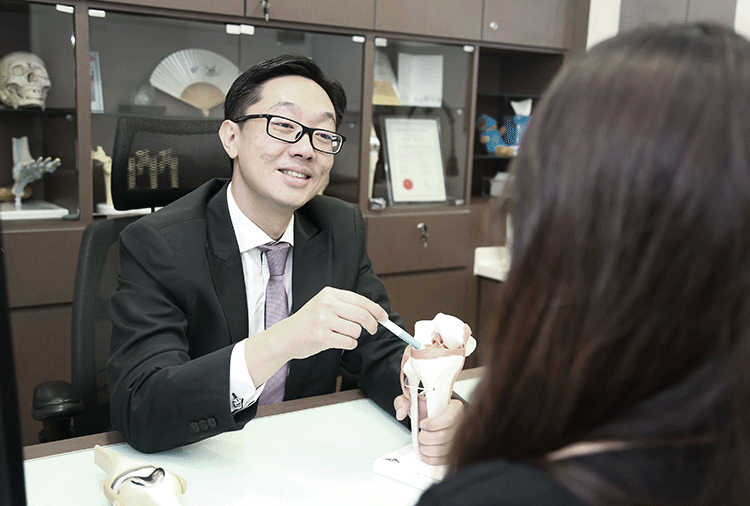Hip arthritis is a degenerative joint condition that can cause significant pain and discomfort, affecting one’s ability to perform daily activities and enjoy life fully. This condition is particularly common among older adults but can also affect younger individuals due to various factors.
What Is Hip Arthritis, And Why Is Treatment Important?
Hip arthritis is a condition where the cartilage in the hip joint gradually wears away, leading to pain, stiffness, and reduced mobility. The most common types of hip arthritis are osteoarthritis, which results from wear and tear, and rheumatoid arthritis, an autoimmune condition that causes inflammation.
Treatment is essential because it helps manage pain, maintain joint function, and improve the quality of life. Without appropriate treatment, hip arthritis can lead to severe disability, making it difficult to walk, climb stairs, or engage in other routine activities. Early intervention can slow the progression of the disease and help individuals maintain an active and healthy lifestyle.
What Are The Causes And Risk Factors Of Hip Arthritis?
Causes
- Age – The risk of developing hip arthritis increases with age due to the natural wear and tear on the joint over time.
- Joint Injury – Previous injuries to the hip joint, such as fractures or dislocations, can lead to arthritis later in life.
- Obesity – Excess body weight places additional stress on the hip joint, accelerating the wear and tear of the cartilage.
- Genetics – A family history of arthritis can increase the likelihood of developing hip arthritis.
- Joint Abnormalities – Congenital or developmental abnormalities in the hip joint can predispose individuals to arthritis.
- Overuse – Repetitive stress on the hip joint from certain occupations, sports, or activities can contribute to the development of arthritis.
- Inflammatory Diseases – Conditions such as rheumatoid arthritis and other autoimmune diseases can cause hip arthritis due to chronic inflammation.
Risk Factors:
- Age – Older adults are more susceptible to developing hip arthritis.
- Family History – A genetic predisposition to arthritis can increase the risk.
- Gender – Women are more likely to develop hip arthritis, particularly after menopause.
- Obesity – Excess weight increases the stress on the hip joints, leading to faster cartilage degeneration.
- Physical Activity – High-impact activities and sports can increase the risk of hip arthritis, especially if proper techniques and equipment are not used.
- Joint Injury History – Past injuries to the hip joint can make it more prone to developing arthritis.
- Occupation – Jobs that involve heavy lifting, repetitive movements, or prolonged periods of standing can increase the risk of hip arthritis.
What Are The Common Symptoms Of Hip Arthritis?
Hip arthritis presents with a range of symptoms that can significantly impact daily activities and quality of life. Recognising these symptoms early is crucial for seeking appropriate treatment and managing the condition effectively.
- Pain – The most common symptom, pain is typically felt in the groin, thigh, or buttocks and can range from mild to severe. It often worsens with activity and improves with rest.
- Stiffness – Morning stiffness or stiffness after periods of inactivity is common, making it difficult to move the hip joint freely.
- Limited Range of Motion – Reduced flexibility and difficulty moving the hip joint can occur, affecting walking, bending, and other activities.
- Swelling – Inflammation can cause swelling in and around the hip joint, leading to discomfort and reduced mobility.
- Clicking or Popping – Some individuals may experience a clicking or popping sensation in the hip joint during movement.
- Weakness – The muscles around the hip joint may weaken over time, further reducing stability and function.
- Decreased Activity Level – Due to pain and stiffness, individuals with hip arthritis often find themselves reducing their activity levels, which can lead to further joint stiffness and muscle weakness.
How Is Hip Arthritis Diagnosed?
Accurate diagnosis is essential for effective treatment and management of the condition. The diagnostic process includes a detailed clinical examination and a range of diagnostic tests to evaluate the extent of arthritis and differentiate it from other potential hip disorders.
Clinical Examination
- Medical History – The doctor will take a detailed medical history, including information about the onset of symptoms, pain severity, activities that worsen the condition, and any previous injuries or medical conditions related to the hip.
- Visual Inspection – The hip will be inspected for signs of swelling, redness, or deformity. The doctor will observe the patient’s posture and gait for any abnormalities.
- Palpation – The doctor will gently press on the hip joint and surrounding areas to assess tenderness, warmth, and swelling. Palpation helps identify areas of pain and inflammation.
- Range of Motion – The doctor will evaluate the range of motion of the hip joint, checking for any limitations, stiffness, or discomfort during movements such as flexion, extension, abduction, and rotation.
- Functional Tests – The patient may be asked to perform specific activities, such as walking, climbing stairs, or squatting, to assess the impact of arthritis on daily functions and to evaluate pain and mobility issues.
Diagnostic Tests
- X-rays – X-rays are the primary imaging method for diagnosing hip arthritis. They reveal changes in the joint, such as the narrowing of the joint space, bone spurs (osteophytes), and changes in bone structure.
- MRI – Magnetic Resonance Imaging (MRI) provides detailed images of the soft tissues within the hip joint, including cartilage, ligaments, and muscles. It helps assess cartilage damage, inflammation, and any associated abnormalities.
- CT Scan – A Computed Tomography (CT) scan may be used for detailed cross-sectional images of the hip joint, particularly if complex joint changes or structural issues are suspected.
- Ultrasound – Ultrasound imaging can be used to detect inflammation, fluid accumulation, and other soft tissue abnormalities around the hip joint. It is also useful for guiding joint injections or aspirations.
- Joint Aspiration (Arthrocentesis) – This procedure involves withdrawing fluid from the hip joint with a needle to analyse it for signs of infection, inflammation, or other abnormalities that could contribute to arthritis symptoms.
What Are The Hip Arthritis Treatment Options?
Hip arthritis involves inflammation and deterioration of the cartilage in the hip joint, leading to pain, stiffness, and decreased mobility. Treatment aims to relieve pain, improve function, and slow the progression of the disease. Options include:
Lifestyle Modifications:
Hip arthritis involves inflammation and deterioration of the cartilage in the hip joint, leading to pain, stiffness, and decreased mobility. Treatment aims to relieve pain, improve function, and slow the progression of the disease. Options include:
- Weight Management – Maintaining a healthy weight reduces stress on the hip joint and can alleviate symptoms.
- Exercise – Low-impact activities like swimming, cycling, and walking can improve joint function and strengthen the muscles around the hip. A physical therapist can design a tailored exercise program.
- Activity Modification – Avoiding high-impact activities and modifying daily tasks to reduce joint strain can help manage symptoms.
Medications:
- Nonsteroidal Anti-Inflammatory Drugs (NSAIDs) – Over-the-counter NSAIDs like ibuprofen or naproxen can help reduce pain and inflammation.
- Acetaminophen – Provides pain relief if NSAIDs are not suitable or if additional pain management is needed.
- Corticosteroids – Oral or injected corticosteroids may be used for more severe inflammation when other medications are ineffective.
Physical Therapy:
- Exercises – A physical therapist can design exercises to strengthen the muscles around the hip, improve flexibility, and enhance overall joint function.
- Manual Therapy – Techniques such as joint mobilisation and stretching can help improve the range of motion and reduce pain.
Assistive Devices:
- Canes or Walkers – Using assistive devices can help reduce stress on the hip joint and improve mobility.
- Orthotic Inserts – Custom orthotic inserts for shoes can help improve gait and reduce hip pain.
Injections:
- Corticosteroid Injections – Injecting corticosteroids directly into the hip joint can provide temporary relief from inflammation and pain.
- Hyaluronic Acid Injections – These injections can lubricate the joint and may help improve mobility and reduce pain.
Surgery:
- Arthroscopy – A minimally invasive procedure where a small camera is inserted into the joint to remove damaged tissue or repair cartilage. This is usually considered for specific cases and not as a first-line treatment.
- Osteotomy – A surgical procedure to realign the hip joint and reduce stress on the damaged cartilage. This is typically considered for younger patients with specific types of hip arthritis.
- Hip Replacement Surgery – In cases where other treatments are ineffective, hip replacement surgery may be recommended. This involves replacing the damaged hip joint with an artificial one, which can significantly improve pain and function.
Alternative Therapies:
- Acupuncture – Some individuals find relief through acupuncture, which involves inserting thin needles into specific points on the body to relieve pain and improve joint function.
- Massage Therapy – Therapeutic massage can help reduce muscle tension and improve circulation around the hip joint.
Prevention Strategies For Hip Arthritis
Hip arthritis, particularly osteoarthritis, causes pain, stiffness, and reduced mobility. Effective prevention strategies focus on managing symptoms, improving joint function, and preventing further joint damage. Here are some strategies:
- Engage in regular physical activity to strengthen the muscles supporting the hip, improve flexibility, and maintain a healthy weight. Focus on low-impact exercises such as walking, swimming, or cycling.
- Incorporate strength training exercises to build strong muscles around the hip, particularly the glutes, quadriceps, hamstrings, and hip muscles. Strong muscles provide better support and stability to the hip joint.
- Regularly perform stretching exercises to maintain flexibility in the hip and surrounding muscles. Include stretches for the hip flexors, hamstrings, and glutes.
- Wear shoes that provide adequate support and cushioning for the feet and hips. Replace worn-out shoes regularly to maintain proper support.
- Avoid activities that put excessive stress on the hip joints. Modify movements and use proper techniques to minimise joint strain. Incorporate rest periods during activities to prevent overuse injuries.
- Maintain a healthy weight to reduce the stress on hip joints. A healthy diet and regular exercise can help achieve and maintain an optimal weight.
- Make ergonomic adjustments at home and work to reduce stress on the hip joints. Use chairs with proper support, adjust the height of workstations, and use supportive cushions as needed.
- Incorporate a variety of activities into your fitness routine to avoid overuse injuries. Cross-training can help balance muscle development and reduce repetitive strain on the hips.
- Maintain a healthy lifestyle by eating a balanced diet rich in anti-inflammatory foods, staying hydrated, getting enough sleep, and managing stress. These factors contribute to overall joint health and reduce the risk of arthritis.
- Schedule regular check-ups with a healthcare professional to monitor hip health and address any underlying issues that may contribute to hip arthritis. Early detection and intervention can help prevent progression and improve treatment outcomes.






